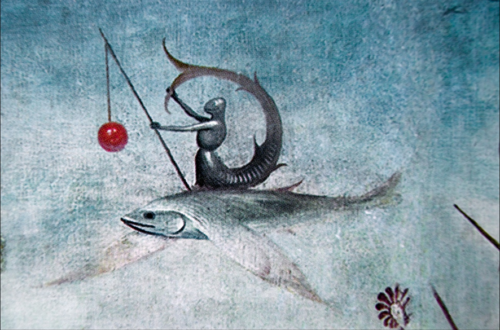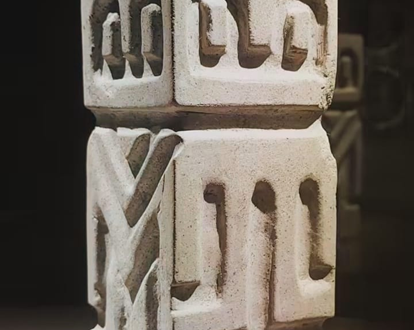septiembre 15, 2023
Consorcio Relacional y Socioconstruccionista del Ecuador (IRYSE)
Maritza Crespo Balderrama, M.A. y Diego Tapia Figueroa, Ph.D.
In our psychotherapeutic practice, it is quite common to hear that both women and men indicate that they live in a “toxic” relationship and it is usually a common theme for working in therapy with couples and families. Even in conversations between friends, it is quite common to hear that some people talk about their partner being toxic or that they are part of a relationship that they experience as toxic.
In this context, it is interesting to be able to determine what a “toxic relationship” entails and what are some of its most common characteristics, which allow you to recognize if you are part of one, how they are sustained over time, and, most importantly, how to get out of them.
Toxic relationships… what are they like?
The term “toxic” applied to relationships is quite recent and is usually used to describe some situations in which one of the members of the couple feels disadvantaged or treated in an unfair, abusive, or violent way.
Let’s start by saying that in every relationship that is «toxic,» there is an emotional dependency that means that one of the members of the couple does not feel capable of facing, or cannot for some reason -in an adult and independent way- meet their own needs, desires, and responsibilities. This means that he or she does not feel that he or she is capable of taking care of himself or herself and thinks and lives his or her relationship as a space in which there is no well-being or possibilities of fulfillment, although he or she does not know or cannot get out of it or end it.
A toxic relationship is, in fact, a relationship that no one should be in. They are called “toxic” because of their similarity to addictions to substances in which the addicted person has no strength or possibility to stop using on their own and that, many times, there are relapses, exacerbations, and other types of “symptoms” that increase dependency and discomfort.
In toxic relationships, you cannot conceive the idea of living without the other, even if this causes obvious damage. A toxic relationship -although usually associated with romantic relationships- can also exist in friendship (dependent or co-dependent friends), work (bosses, colleagues, or subordinates), family (fathers and mothers, siblings, relatives), etc.
How do I know if my partner or I are toxic?
To identify whether a relationship is toxic or not, it is important to be able to recognize some traits (or ways of being) of the partner and, of oneself, that sustain the relationship in which discomfort and pain prevail.
Among the most common traits of “toxicity” in a person are:
1. Getting upset when the other person makes plans with autonomy and independence or goes out with friends or on their own: they feel jealous, prohibit that from happening, generate conflict, or become victimized for this reason.
2. Doing things to sustain dependence on another person: forcing that they always be consulted before deciding, having the last word, hiding or omitting information that would enable the other to make autonomous decisions.
3. Avoid the other’s access to personal objects, their own money, or their loved ones (family, friends).
4. Not allowing intimacy or privacy and pretending to have control over everything and every aspect of the couple’s life (spying on their cell phone, their social networks, scheming to “discover” something “suspicious”).
5. Control of the other person’s movements, schedules, and money.
6. Not asking the other’s opinion in any aspect, ordering them to shut up, question, blackmail, disrespect.
7. Overprotecting the other person, making them feel stupid or incapable of doing and deciding about their life.
8. Make the other believe that without him or her, he or she is bad, worse, or insufficient and that only in company or as part of the couple does, he or she have any value.
9. Being selfish or self-centered or tending to victimize oneself.
10. Blackmail emotionally or physically to obtain sexual benefits or have sexual relations with the partner.
11. Distrust the criteria, choices, and decisions of the couple; unilaterally imposing lifestyles, affections, decisions, and everyday life.
People with all (or some) of these traits often transform their relationships into toxic relationships.
Some characteristics of toxic relationships
Toxic relationships are usually characterized by some of the situations explained below, which frequently occur:
1. Emotional dependence: which means that one’s own stability and emotional well-being can only be achieved based on the existence of the other person within the relationship; “my emotional stability, my peace, and my being depend on my partner”, “I cannot live without my partner”, “without him/her I am nothing”. They are phrases that sound very romantic but denote a clear emotional dependence that leads couples to toxic relationships.
2. Lack or excess of limits: one of the two in the couple demands and imposes abusive limits on the other (often violently), while he/she does not accept any limits. In couples that are not toxic, limits arise from respectful agreements between members and not from imposition.
3. Emotional peaks and little serenity: in toxic relationships, the couple experiences constant “storms” and emotional escalations, in which there is usually a lot of shouting and exaggerated manifestations of crying, complaining, or anger. Likewise, excessive control, constant blaming, repentance without rectification, manipulation, and emotional blackmail are constant and daily.
4. Irrationality and constant justification (not assuming co-responsibility for what one chooses and agrees to live): the couple within a toxic relationship is subject to requests, limits, irrational attitudes that are constantly justified as “manifestations of affection”, “concern” and love” or as a result of “stress.”
5. Increasingly frequent fluctuations and cycles: toxic relationships usually experience constant fluctuations in the relationship, going from an apparent calm or peace to an argument or emotional peak in a short time. It is also common for there to be cycles (such as the cycle of violence) that are increasingly shorter and of which the protagonists are not always aware.
It is very important to keep in mind that “toxicity” in a relationship is very evident from the outside while the protagonists usually do not notice it. Friends, family, and close people can see that the couple has toxic behaviors because the attitudes and way of relating (how they talk to each other, how they respond, how they treat each other) show some of the aspects raised above. A culture of relational abuse is normalized, romanticized, and justified, with the alibi of love.
On the other hand, people who are in the relationship, at least at the beginning, tend not to notice or justify their partner’s attitudes due to external situations, thus adding to the minimization that the other makes of their feelings.
Decide to leave the isolation imposed by toxic relationships and begin to build deep, respectful, and meaningful relational bonds in loving and social contexts. Create support networks to free yourself from that oppressive yoke, which installs a toxic relationship; as well as seek professional help and therapy. Little by little the drama will be left in the past, to enjoy the present with others. For this, it is essential to establish healthy human ethical limits (relational ethics as a compass of all human interaction and communication), and responsible self-protection, to generate new futures with relational well-being.
Continuing with this, it is recommended that as soon as one of the members of the couple notices that the relationship is not what one believed, or when a feeling of pain, fear, or discomfort begins in the couple, they can seek professional therapeutic help (together or individually) that contributes to the transformation or overcoming of the bond; to get out of it in an intelligent, healthy and positive way. Life, the future, peace, joy, freedom, and personal and relational well-being can depend on this.
(***) Authorized reproduction of the publication, in January 2023, in the Magazine https://www.maxionline.ec/
Suggested bibliography:
https://iryse.org/sociedad-patriarcal-cultura-de-muerte-asesinadas-por-ser-mujeres/

English translation by Bruno Tapia Naranjo.




2 Comments
Jorge Figueroa Rosero
Es parte de lo que estoy viviendo. Quisiera encontrar soluciones que eviten una ruptura radical. Al momento nos une únicamente la familia, algunas experiencias juntos y la comodidad, pero nos separa la falta de ilusiones y de de querer construí algo que nos una y nos dé felicidad.
irysecuador
Estimado Jorge, gracias por escribirnos. Con gusto puedes agendar una cita (0987062628) para que podamos acompañarte en la comprensión y apertura de nuevas alternativas.
Saludos.
Diego y Maritza